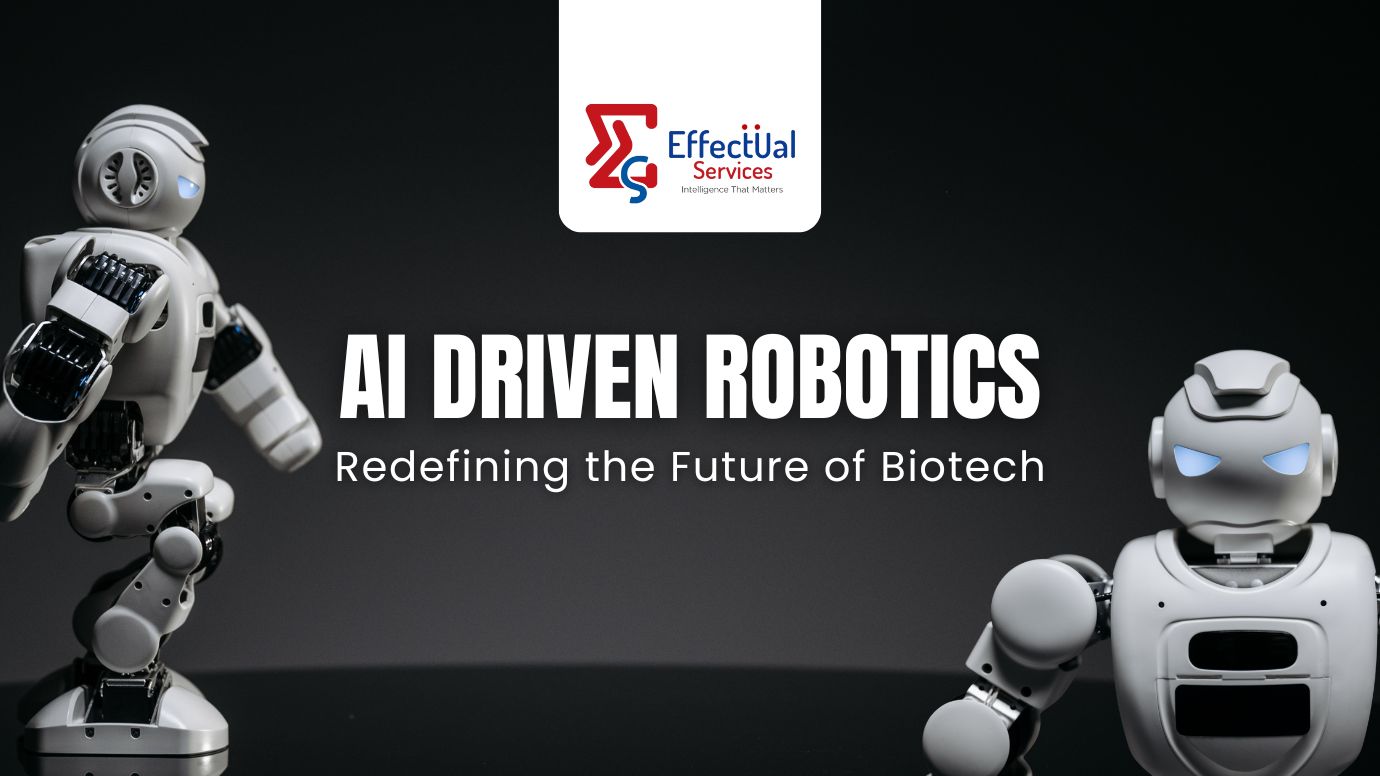
Understanding AI Driven Robotics: Concepts and Market Overview
What is AI Driven Robotics?
AI-driven robotics refers to robots that integrate advanced artificial intelligence (machine learning, computer vision, natural language, etc.) into their control systems, enabling them to sense, learn, and act more autonomously than traditional machines. Unlike early “blind” robots that followed fixed programs, AI-powered robots can adapt to new situations, recognize objects or speech, and even be programmed via natural language.
This convergence of robotics and AI is accelerating now because of surging demand for automation (driven by labor shortages and supply-chain pressures), steep improvements in AI (deep learning, sensor fusion, and increased compute power), and broader digitalization (cloud robotics, 5G/IoT connectivity and low-cost sensors).
Market Insights
Global robotics markets are growing at double-digit rates across sectors. The International Federation of Robotics reports that the world’s industrial robot population hit a new all-time high of roughly 4.28 million units in 2023, a 10% jump in one year. Annual installations of new industrial robots remain very strong (over 541,000 units in 2023), led by Asia (70% of new robots) and especially China (51% of new installs). Service robots (which include logistics robots, medical robots, etc.) are growing even faster: world sales of professional service robots rose by 30% in 2023 (to ~205,000 units), with roughly 113,000 of those (54%) going into transportation and logistics tasks. Consumer robotics – home cleaning robots, lawn mowers, personal assistants, etc. – are also on a steep growth path.
Key demand drivers behind these growth figures include:
Labor Shortages & Demographics: Global labor gaps like 3M+ missing truck drivers—are pushing industries to adopt robotics where Aging populations also drive demand in healthcare and eldercare for assistive robots.
Efficiency & Productivity: Robots work 24/7, don’t tire, and boost speed and accuracy in tasks like picking or assembly and AI-driven maintenance cuts downtime costs—critical in high-value industries like auto manufacturing.
E-Commerce & Supply Chain Demands: Online shopping has overwhelmed traditional logistics, speeding up warehouse automation and autonomous robots now handle loading, sorting, and last-mile delivery with growing adoption.
Limitation
Despite the upside, several major hurdles slow down AI-robotics deployment:
Technical Complexity & Reliability: AI robots can misidentify objects, fail in unfamiliar scenarios, or struggle with dexterous tasks, even when advanced bots often require long training times and may not perform reliably outside labs.
Safety and Standards: Existing safety rules weren’t designed for learning robots, making compliance harder and Upcoming regulations will demand proof of safety for both current and future AI behaviors.
Integration and Skill Gaps: Deploying AI robots requires custom setups and skilled teams many firms lack. Smaller businesses especially struggle with costs, integration, and workforce resistance.
Advantages
Efficiency and Productivity Gains: Robots handle repetitive tasks faster and more accurately than humans, boosting output. AI adds predictive maintenance, reducing costly downtime in factories and warehouses
Cost-Effectiveness (Long-Term): Though upfront costs are high, robots cut long-term labor and error-related expenses. They enable leaner operations and often pay for themselves over time.
Improved Safety and Working Conditions: Robots reduce injury risk by taking on hazardous or physically demanding tasks. Robots and safety features let humans and machines work side by side safely.
Start Up Focus
Advanced AI & Autonomy: Robots will learn faster using generative AI and simulation tools like Isaac Sim. They’ll adapt to new tasks via video demos, language commands, and real-time learning.
Human–Robot Collaboration: Robots will work safely alongside humans, blending AI with advanced sensors. They’ll assist in tasks like welding or assembly, easing labor shortages.
New Business Models – Robots as a Service (RaaS): Robots will be available on subscription, lowering upfront costs for businesses. Cloud AI and remote updates will make powerful robotics more accessible to SMEs
Some Examples of AI Driven Robots
LOOI Robot: LOOI is a sleek and interactive addition to your tech collection. Transforms your smartphone into a robotic companion, utilizing the phone’s sensors and display. Responds to user gestures for intuitive control.
Jidoka Robot Dog: Performs complex movements like backflips, side flips, and handstands. Navigates diverse terrains with obstacle avoidance. Customizable actions for various applications.
BeatBot Amphibious Roboturtle: Operates both underwater and on land, mimicking natural turtle movements. Features water environment monitoring, biometric tracking, and AI-supported hazardous material sampling. Returns to its charging station autonomously.
Pollen Robotics: Designed to engage with humans in public spaces, offering information and assistance. Antennae modeled after dog ears to appear friendly and approachable.
AI-driven robotics is reshaping industries by combining intelligence & automation to drive smarter, faster & more adaptive solutions.
Related Resources
Top Key Player of AI-Driven Robots
Market Insights AI-Driven Robots
About Effectual Services
Effectual is a global knowledge group that supports the research and innovation needs of various R&D groups. We work across a wide range of industries to find out technology components that are synergistic when bundled together to deliver a superior solution.
We assist corporations in understanding the markets involved in a particular technology and the latest developments in the technology area, while also suggesting novel technological solutions to a challenging statement. They achieve their research needs through us by quick and promising solutions backed with scientific data that could add value to their business needs.




